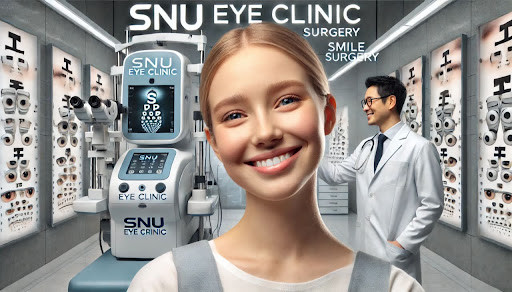LASIK Myths Debunked: Separating Fact from Fiction
LASIK (Laser-Assisted In Situ Keratomileusis) eye surgery has transformed the lives of millions by providing clearer vision without glasses or contact lenses. Despite its popularity and success, numerous myths and misconceptions continue to surround the procedure. These myths often cause confusion or unnecessary fear among prospective patients. In this article, we aim to separate fact from fiction snu eye clinic and provide an evidence-based perspective on LASIK surgery.

One of the most widespread myths is that LASIK is painful. In reality, the procedure is virtually painless due to the numbing eye drops used before surgery. Most patients feel slight pressure during the process, but it is not painful. Post-surgery, some may experience minor discomfort, dryness, or irritation, but these symptoms usually subside within a few days. Compared to the long-term inconvenience of glasses or contacts, the brief recovery period is often viewed as a small tradeoff for lasting vision correction.
Another common misconception is that LASIK is only for young people. While it’s true that candidates under 18 are generally not eligible due to their still-changing vision, there is no upper age limit as long as the eyes are healthy. Many people in their 40s, 50s, or even 60s undergo LASIK with excellent results. The key factor is not age but rather the stability and overall health of the patient’s eyes. A comprehensive pre-surgical evaluation ensures that only suitable candidates proceed with treatment, regardless of age.
Many believe that LASIK results are temporary and that vision will eventually regress. This is largely a myth. LASIK reshapes the cornea to correct vision, and the results are generally permanent. However, natural age-related changes in vision, such as presbyopia (the need for reading glasses after age 40), can still occur. These changes are not due to the failure of the LASIK procedure but are part of the normal aging process. Some patients may require enhancement procedures later on, but most enjoy many years of improved vision without additional intervention.
There’s also a lingering belief that LASIK can lead to blindness. While no surgical procedure is completely without risk, the chances of serious complications from LASIK are extremely rare. The risk of vision loss is significantly lower with LASIK than from extended use of contact lenses, which can cause infections if not properly maintained. Modern LASIK is performed with advanced laser technology and safety protocols, making it one of the safest elective surgeries available today.
Finally, some assume that LASIK is prohibitively expensive and not worth the cost. While LASIK does involve an upfront investment, it can be more cost-effective in the long run compared to the ongoing expenses of glasses, contact lenses, and related accessories. Additionally, many clinics offer financing options, making the procedure more accessible. Patients should consider not only the financial aspects but also the lifestyle benefits—freedom from corrective lenses, convenience, and increased confidence.
In conclusion, LASIK is a highly effective and safe option for those seeking vision correction, and many of the common fears surrounding it are based on outdated or incorrect information. Modern advancements in technology and surgical techniques have made the procedure more precise and comfortable than ever before. If you’re considering LASIK, the best step you can take is to consult a qualified ophthalmologist for a comprehensive eye exam and candid discussion. By understanding the facts, you can make an informed decision and potentially experience life with clearer, sharper vision.

Post Comment